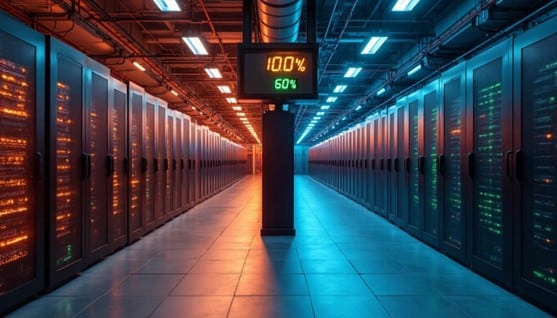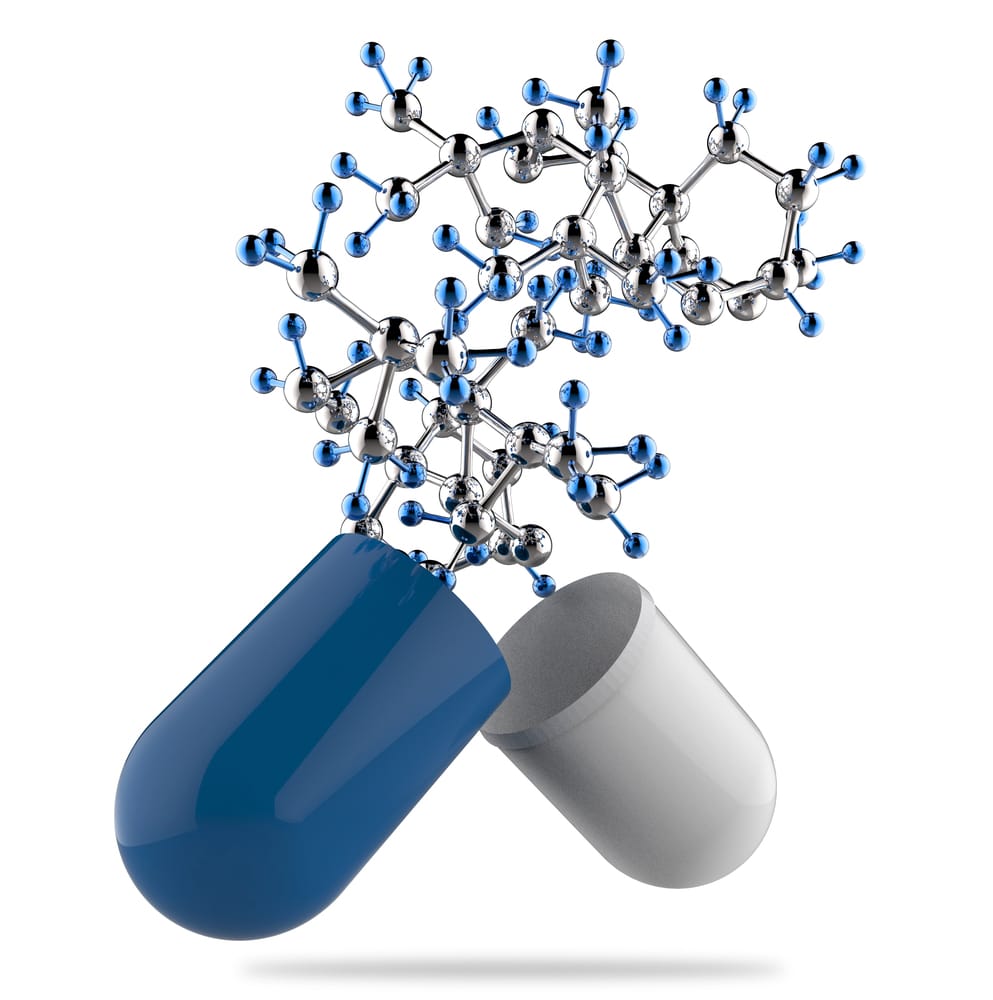
Data center modernization benefits extend far beyond improved technology capabilities. In fact, 80% of typical data center annual P&L costs come from mechanical/electrical utilities and CapEx depreciation. This financial reality has pushed our industry to rethink how we design and operate these critical facilities.
When we examine the potential impact of modernizing data centers, the numbers are compelling. For example, reducing a Power Usage Effectiveness (PUE) from 1.8 to 1.5 in a 1MW data center can result in $262,000 annual utility savings. Additionally, modern data center architectures deliver significantly improved energy efficiency and resource optimization. While implementing a data center modernization strategy may require initial investment, over time it leads to lower operational expenses. Furthermore, with over 40 countries now requiring greenhouse gas emissions reporting, the benefits of data modernization extend beyond cost savings to regulatory compliance and sustainability goals.
Why Energy Efficiency is Now a Business Imperative
Energy efficiency has become essential for data center operations due to three converging factors that impact the bottom line, regulatory compliance, and corporate reputation.
Rising energy costs and environmental regulations
Regulatory oversight of data centers has increased dramatically, with ESG regulations surging by 155% over the past decade. This shift reflects growing government awareness of data centers’ environmental impact. In California, new laws mandate businesses to report carbon emissions and climate-related financial risks. Moreover, the European Union’s Corporate Sustainability Reporting Directive now requires companies operating within EU borders to disclose their climate impact.
These regulations come at a critical time as data center electricity usage continues to climb. In 2023, data centers consumed approximately 4.4% of total U.S. electricity and are projected to reach between 6.7% and 12% by 2028. This trajectory poses both compliance challenges and opportunities for organizations implementing data center modernization strategies.
Investor and customer pressure for ESG compliance
Beyond regulatory demands, market expectations have evolved considerably. According to the National Renewable Energy Laboratory, 80% of U.S. consumers now care about the use of renewable energy. This consumer sentiment directly affects brand perception and purchasing decisions.
Consequently, sustainability has transformed from a competitive advantage into a business necessity. Investors increasingly evaluate companies based on their environmental performance, creating financial incentives for data center modernization. Organizations that modernize their data centers not only reduce operational costs but also strengthen their appeal to environmentally conscious stakeholders.
The role of data centers in global energy consumption
The scale of data centers’ energy impact continues to grow globally. Currently, these facilities account for approximately 1% of global electricity consumption. However, in advanced economies like the United States, China, and the European Union, data centers already represent 2-4% of total electricity usage.
At the regional level, the concentration is even more pronounced. Data centers have exceeded 10% of electricity consumption in at least five U.S. states, and in Ireland, they consume over 20% of all electricity. Looking ahead, global electricity demand from data centers is projected to more than double by 2030, reaching approximately 945 terawatt-hours – equivalent to Japan’s entire current electricity consumption.
Artificial intelligence represents a particularly significant driver of this increase. As organizations deploy AI solutions, their data center energy requirements grow substantially, making modernization efforts that improve efficiency increasingly valuable from both cost and sustainability perspectives.
What the Study Tells Us About Modernization ROI
Recent studies reveal striking financial returns from data center modernization initiatives, with energy efficiency improvements taking center stage in overall cost reduction strategies.
Breakdown of the 40% energy savings
The most substantial savings come from cooling system modernization, which typically accounts for up to 40% of a data center’s total energy consumption. By implementing AI-driven cooling optimization alone, facilities have achieved a 40% reduction in cooling energy requirements. This translates into a 15% decrease in overall Power Usage Effectiveness (PUE) after accounting for electrical losses and other non-cooling inefficiencies. Given that cooling represents such a significant portion of operational expenses, these improvements directly impact the bottom line.
CapEx vs OpEx trade-offs in modernization
Data center modernization often involves strategic shifts between capital expenditures (CapEx) and operational expenditures (OpEx). CapEx refers to one-time investments in assets like servers and hardware, whereas OpEx covers ongoing operational costs. Research indicates that modernizing legacy data architecture can deliver up to 180% ROI within three years, primarily through reduced operational expenses.
Notably, modernization enables more flexible investment models. Instead of committing to large upfront expenditures (such as a $50 million project), organizations can implement modular solutions with incremental $5 million investments as needs evolve. This approach allows revenue generation from each module before expanding further, substantially improving cash flow and reducing financial risk.
Examples of cost savings from real-world deployments
Real-world implementations demonstrate compelling financial returns:
- Google’s implementation of machine learning for data center cooling management reduced energy consumption by 40%, directly improving operational expenses
- Microsoft’s Wyoming data center achieved 35% cost reduction within 18 months by transitioning to 100% renewable energy
- BNY Mellon saved $1.7 million through multiple data center efficiency measures
- Facebook (now Meta) achieved an impressive PUE of 1.06—well below the industry average of 1.5—through comprehensive modernization
These case studies confirm that investments in modern infrastructure yield substantial returns through reduced energy consumption, improved operational efficiency, and enhanced capacity utilization.
How to Build a Data Center Modernization Strategy
Building an effective data center modernization strategy requires a systematic approach that balances technological, financial, and sustainability factors throughout the process.
Assessing current infrastructure and energy usage
The foundation of any successful modernization starts with a comprehensive audit of existing systems. This initial step should analyze energy usage, cooling efficiency, and overall resource utilization. A thorough assessment helps identify major energy consumers and pinpoints specific areas where improvements will yield maximum returns. During this phase, examine:
- Power distribution systems and backup capabilities
- Cooling infrastructure effectiveness
- Network bandwidth requirements
- Server utilization and performance metrics
Organizations should capture detailed configuration information even for systems planned for retirement, ensuring restoration to known-working states if necessary.
Prioritizing upgrades based on lifecycle and ROI
Once assessment is complete, prioritize projects based on clear ROI criteria rather than pursuing technology for its own sake. Upgrades should expand vital resources, enable new workloads, support additional users, or lower cost per transaction. Financial considerations should include energy costs, tax incentives, and labor expenses.
Effective modernization often involves tangential improvements that enhance overall performance, including redundancy adjustments, cabling updates, and cooling airflow optimization. Initially, focus on immediate needs while developing a long-term roadmap that aligns with business growth projections.
Incorporating energy and sustainability software tools
Sustainability software provides real-time dashboards for monitoring critical metrics including Power Usage Effectiveness (PUE), Carbon Usage Effectiveness (CUE), and Water Usage Effectiveness (WUE). These tools simplify sustainability reporting while identifying inefficiencies that drive ongoing savings.
Established benchmarks allow comparison against industry standards, highlighting where performance improvements are needed. Beyond compliance, these tools support a circular economy approach for responsibly handling decommissioned equipment.
Leveraging cloud-based monitoring and AI analytics
Advanced monitoring platforms offer automatic metric collection and visualization across hybrid environments. AI-powered analytics predict equipment failures before they affect services, minimizing unexpected downtime. Through machine learning algorithms trained on historical data, these systems:
- Forecast power outages
- Reduce maintenance costs
- Optimize cooling systems
- Achieve elevated performance benchmarks
Studies indicate AI deployment in data centers can boost productivity by approximately 30%, although challenges like data silos remain. Furthermore, AI can reduce cooling energy requirements by 40% through continuous optimization of environmental conditions.
What Are the Long-Term Benefits of Data Modernization?
Beyond immediate financial returns, data center modernization delivers enduring strategic advantages that extend throughout an organization’s technology ecosystem.
Improved compliance and audit readiness
Modern data centers simplify regulatory compliance through automated monitoring systems. Organizations can implement compliance as code, embedding security checks directly into infrastructure templates. This approach enables continuous compliance monitoring rather than periodic assessments, significantly reducing audit preparation time. Advanced logging and analysis tools collect and centralize compliance data, allowing teams to identify and remediate issues proactively. These capabilities prove especially valuable as data sovereignty laws and privacy regulations continue to evolve across different regions.
Enhanced security and system reliability
Modernized infrastructure dramatically improves both security posture and operational stability. Modern systems implement robust encryption for data at rest and in transit while enforcing unique credentials and least-privilege principles. System redundancy and failover mechanisms maintain critical operations during disruptions, with some facilities achieving 99.995% uptime. Furthermore, integrated analytics provides real-time visibility across hybrid environments, enabling rapid detection of anomalies or threats. These improvements translate to measurable reliability metrics including reduced Mean Time Between Failures and minimized Loss of Service Costs.
Scalability for future workloads and hybrid environments
Modernized data centers excel at adapting to changing demands through:
- Dynamic resource allocation based on workload requirements
- Flexible scaling for network, storage and compute demand surges
- Seamless extension into cloud services for additional capacity
This scalability supports next-generation workloads including artificial intelligence, machine learning, and high-performance computing. Importantly, modernized facilities can scale without requiring major upfront investments, allowing growth aligned with actual business needs.
Lower carbon footprint and better brand reputation
Organizations migrating to modernized infrastructure can reduce their carbon footprint by up to 80%, a figure that may reach 96% with complete renewable energy adoption. These environmental improvements attract environmentally conscious customers, with studies indicating 80% of U.S. consumers now prioritize renewable energy usage. Additionally, sustainable practices help organizations comply with increasing greenhouse gas emissions reporting requirements across more than 40 countries.
Conclusion
Data center modernization stands as a pivotal strategy for organizations seeking both financial sustainability and environmental responsibility. Throughout this article, we have seen how comprehensive modernization efforts cut energy costs by 40% while simultaneously addressing regulatory requirements and stakeholder expectations. This dual benefit makes modernization not merely an option but a necessity for forward-thinking companies.
The financial case for modernization remains undeniably strong. Cooling system improvements alone demonstrate remarkable returns, while the flexible investment models allow organizations to grow incrementally rather than committing to massive upfront expenditures. Companies such as Google, Microsoft, and BNY Mellon have already proven the substantial returns possible through thoughtful implementation.
Beyond immediate cost savings, data center modernization delivers lasting advantages across multiple dimensions. First, automated compliance tools significantly reduce audit preparation time. Second, enhanced security features and redundancy mechanisms ensure critical operations continue even during disruptions. Third, scalable infrastructure adapts seamlessly to changing demands without major additional investments.
The environmental benefits deserve equal attention. Modernized data centers dramatically reduce carbon footprints—sometimes by as much as 80%—which strengthens brand reputation among increasingly eco-conscious consumers and investors. This ecological advantage matters particularly as data centers continue to consume larger portions of global electricity.
After all, the evidence clearly shows data center modernization represents a rare opportunity where financial interests align perfectly with environmental responsibility. Organizations that embrace this opportunity now will likely find themselves better positioned for future challenges, especially as AI workloads drive unprecedented demand for computing resources. The question facing most organizations today should not be whether to modernize but rather how quickly they can implement these transformative changes.
Ready to modernize? Contact us today for a free current state assessment, gap analysis, and migration plan!
Why work with Avid?
- We’ve been in your shoes. We leverage deep operational experience to help you manufacture smarter.
- We act like an owner, we are built on agility, and we excel at purpose-driven innovation.
- We are focused on operations, predicting asset issues, lowering unplanned downtime, and driving down support costs.
- We are a pacesetter in remote system deployment, support, and optimization.
- We’re a low-impedance partner and easy to do business with.
We Can Help!
If you are ready to INNOVATE, OPTIMIZE, and TRANSFORM your operations, Avid is eager to help! Contact Avid for an initial discussion. For additional insights or to learn more on how we solve client issues, check out our services.



